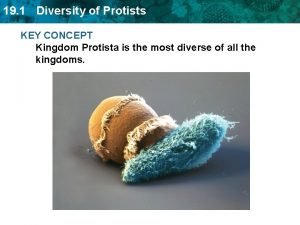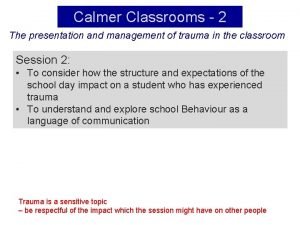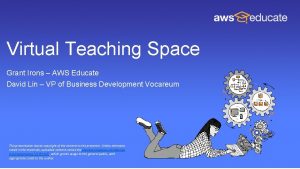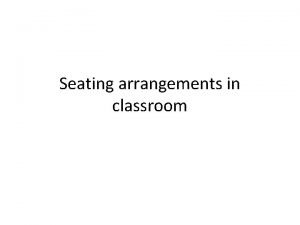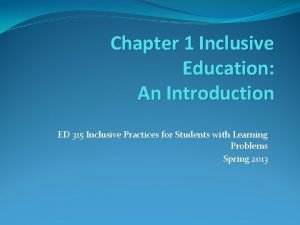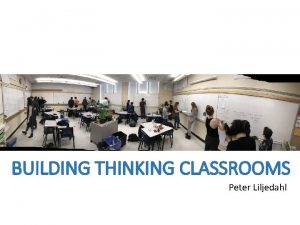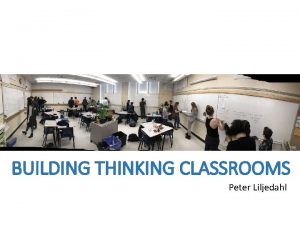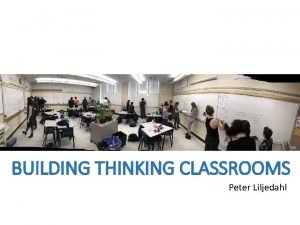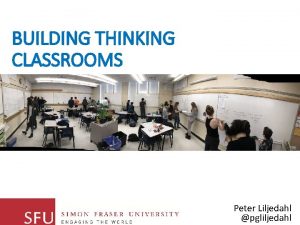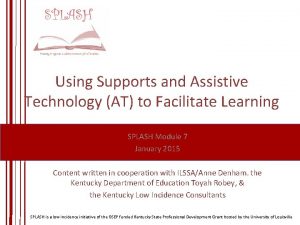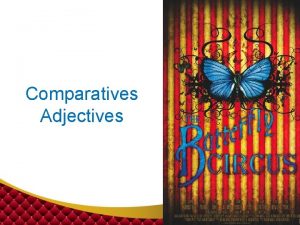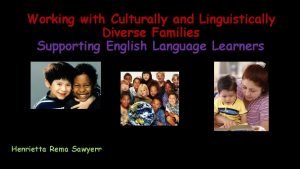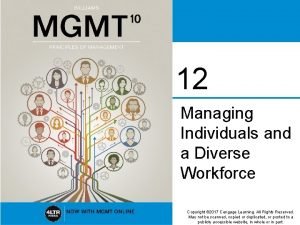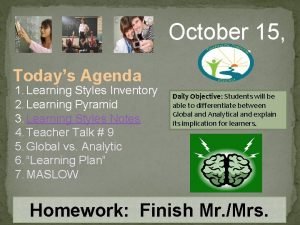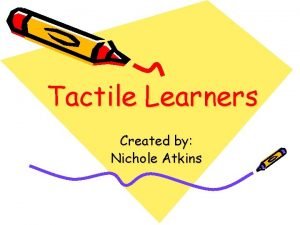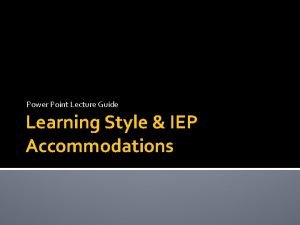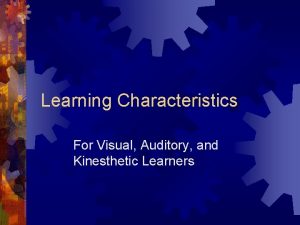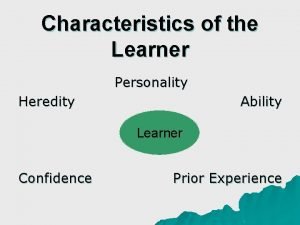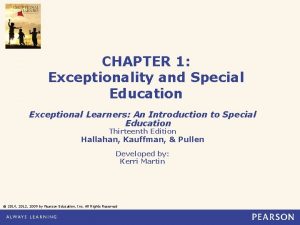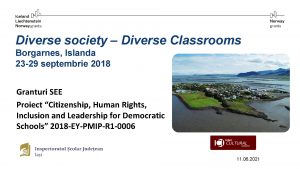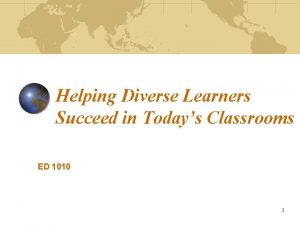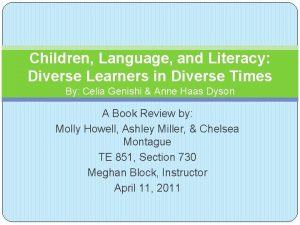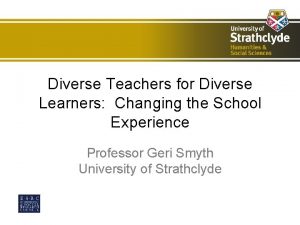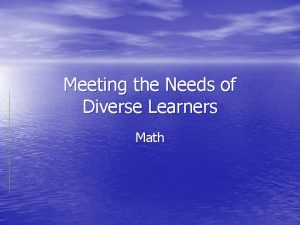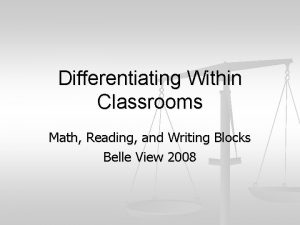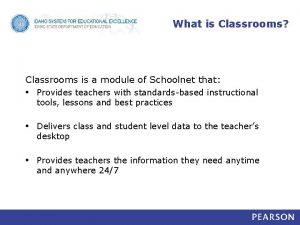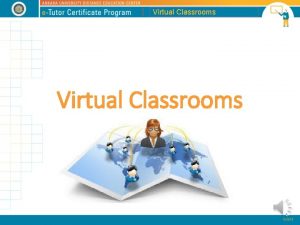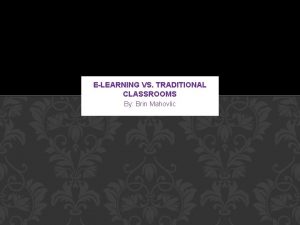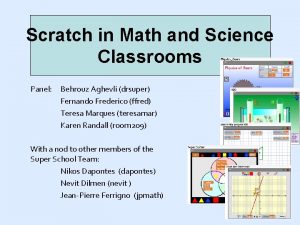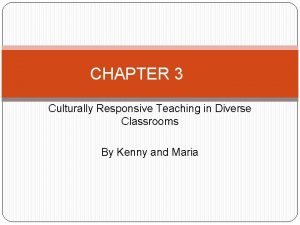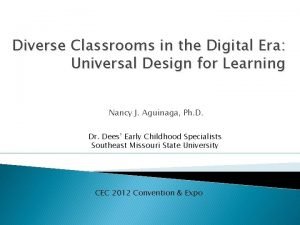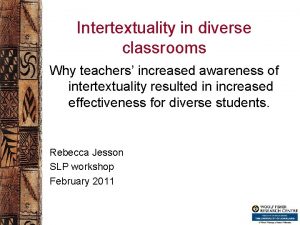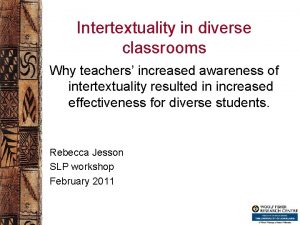Diverse Learners in Math and Science Classrooms Writing



































- Slides: 35

Diverse Learners in Math and Science Classrooms: Writing to Learn and Content. Area Reading Day 2: Connections Cognitive Reading Strategies English Language Development Standards Public Writing Making Connections to Math and Science Content

Gradual Release of Responsibility Frey & Fisher (2006) Focus Lessons “I do it” Teacher Responsibility Demonstrates new strategies and skills: model, scaffold, coach Guided Instruction “We do it” Clarifies questions and explains Group and task are carefully matched Collaborative Plans purposeful learning Learning activities, facilitates “You do it together" group interactions Independent Learning Creates engaging assignments, assists if needed “You do it alone” Observes Questions Participates Applies new learning with guidance Consolidates understanding through interactions with peers Extends learning through synthesis and evaluation to create new understandings Student Responsibility

Modes of Reading Provide Different Amounts of Support From Cooper (2009)

Dimensions of Reading 1. 2. 3. 4. 5. Word Identification Comprehension Vocabulary Fluency Ownership

Comprehension: Cognitive Reading Strategies �Transparent: Explicitly state and model how a strategy helps construct meaning while reading �Transportable: Ultimately, the goal is to help students be aware of and use cognitive strategies across genres and subject areas (Fisher & Frey, 2009)

Cognitive Reading Strategies �Monitoring comprehension �Developing a purpose for reading �Connecting the new to the known or to one’s own life �Asking questions and trying to answer them �Making a prediction �Noticing patterns in text structure �Visualizing a text’s meaning �Fix-up strategies to repair meaning

Comprehension Instruction: Think-Aloud �Select a short piece of text �Foresee difficulty �Read the text aloud and stop often to share your thinking �Point out the words in the text that trigger your thinking

Strategy: Asking Questions While Reading and Trying to Answer Them �Think aloud: Demonstrate your knowledge construction process using a short selection of text �Whole group lesson: Briefly model jotting down questions while reading; have students practice on a short selection of text, sharing out with a partner or the whole class �Small group guided practice: Students jot down questions as they read a short selection, then work in small groups to share and try to answer them �Small group/independent application: Students record questions while reading in a math or science journal

Writing Connection: Latitude and Longitude Double Entry Journal Text information Questions or connections

Strategy: Noticing Text Structure Features and Patterns �Think aloud: Demonstrate how you navigate targeted text features using a short selection of text �Whole group lesson: Briefly model how you utilize text structures while reading; have students practice on a short selection of text, sharing out with a partner or the whole class �Small group guided practice: Have students discuss what they notice about text features and how these might help with understanding the concepts presented �Small group/independent application: Students keep a personal dictionary of vocabulary highlighted in text

Cognitive Reading Strategy Practice �Sketch a plan for using a think-aloud to model one of these two strategies with the text you brought today: �Asking questions while reading and trying to answer them �Noticing text structure features and patterns �Practice think-aloud with a partner

Comprehensive Vocabulary Instruction I. III. IV. Frequent, extensive, varied language experiences Teaching individual words Teaching word learning strategies Fostering word consciousness

“The Mathew Effect” “The rich get richer and the poor get poorer” Stanovich (1986) l Children starting school with smaller vocabulary must learn words faster to catch up with others – l l At 36 months – high SES knows twice as many words (1, 100) as children in low SES (480) Struggling readers tend to read less, so the number of words read and learned is significantly lower The more words you know, the easier it is to learn more word meanings (Marzano, 2004) Need to increase text exposure Need to provide explicit instruction

Identifying Vocabulary to Teach �Is understanding the word important to understanding the selection in which it appears? �Are students able to use context to discover the word’s meaning? �Can working with this word be useful in furthering students’ context, structural analysis, or dictionary skills? �How useful is this word outside of the reading selection being currently taught?

Word-Learning Tasks � � � Basic oral vocabulary Read known words New words, known concepts New words, new concepts Clarifying/enriching known words

Teaching Idea - Linear Arrays Show related words on a continuum (Cooper, 2009)

Teaching Idea- Semantic Mapping l Place words on a map showing relationship (Cooper, 2009)

Teaching Idea. Semantic Feature Analysis Grid l Analyze related words (Cooper, 2009) Vehicles Two Wheels Four Wheels More than Motor Four Wheels Diesel Fuel Gasoline Car - + - + Bicycle + - - - Truck - + + - Sailboat - - - 18

Teaching Idea Comparing and Contrasting l Venn Diagram to compare and contrast concepts (Cooper, 2009) PROTEST Vietnam War protests Letters to the Editor Marches REBELLION Objects to Policy Organized Citizen Action Challenges authority South seceding from Union 19

Teaching Idea: Four-Square Activity

Teaching Word Learning Strategies � Using context clues � Using word parts � Using the dictionary

Four Context Types to Consider � Sandra had won the dance contest, and the audience’s cheers brought her to the stage for an encore. “Every step she takes is so perfect and graceful, ” Ginny said grudgingly as she watched Sandra dance. 1. Misdirective: directs student to incorrect meaning

Four Context Types to Consider �Don heard the door open and wondered who had arrived. He couldn’t make out the voices. Then he recognized the lumbering footsteps on the stairs and knew it was Aunt Grace. 2. Nondirective: no assistance directing toward any particular meaning

Four Context Types to Consider �Joe and Stan arrived at the party at 7 o’clock. By 9: 30, the evening seemed to drag for Stan. But Joe really seemed to be having a good time at the party. “I wish I could be as gregarious as he is, ” thought Stan. 3. General: enough information to place word in general category

Four Context Types to Consider �When the cat pounced on the dog, he leapt up, yelping, and knocked down a shelf of books. The animals ran past Wendy, tripping her. She cried out and fell to the floor. As the noise and confusion mounted, Mother hollered upstairs, “What’s all that commotion? ” 4. Directive: likely to lead student to a specific, correct meaning

Deciding Which Words To Teach � Three tiers of words Most basic words 2. High frequency words for mature language users 3. Low frequency words from specific domains 1. � Points to consider � Importance and utility � Instructional potential � Conceptual understanding (Beck, Mc. Keown, & Kucan, 2002) � Connect to the 5 Cs of Vocabulary Instruction

Application to Content Thinking about the math or science lesson you’ve been working with: �Identify key vocabulary �What kind of context is provided for these words? � Misdirective, nondirective, general, directive �What word-learning tasks might apply for these words? � � � Basic oral vocabulary Read known words New words, known concepts New words, new concepts Clarifying/enriching known words

Fostering Word Consciousness � Create a word-rich classroom environment � Emphasize word choice in writing � Point out and model using new and interesting words � Develop systems for emphasizing vocabulary over time

Language Objectives �Focused on promoting language development �Receptive and productive language skills �State English Language Development (ELD) standards are a starting point �May emphasize: �Vocabulary �Language functions �Language skills �Grammar or language structures �Lesson tasks �Language learning strategies

Latitude and Longitude �Content Objective: Students will be able to use lines of latitude and longitude to find places on a map or globe �Language Objective: Students will be able to define and provide real-life examples of the terms latitude, longitude, parallel, and meridian �Relevant ELDs: � Writing 1. 1. 1 (Intermediate): Maintain log or journal using simple sentences to collect and explore and ideas � Writing 2. 2. 1 (Intermediate): Writes to learn (e. g. , double-entry journal in math and science) using simple sentences � Reading 1. 3. 1 (Advanced Beginning): Use new vocabulary in simple sentences to explain and describe concepts from literary and informational texts.

Application to Content Thinking about the math or science lesson you’ve been working with: �What the content objective? �What is an applicable language objective? �What is a supporting ELD?

Public Writing �Successive drafts �Crafted, copyedited, correct �Ready to be assessed �Substantial �Planned �Authoritative �Conventions �Audience

Shorter Public Writing Projects �People research �Faction �RAFT �Brochure �Newspaper front page �Web page

Latitude and Longitude � Content Objective: Students will be able to use lines of latitude and longitude to find places on a map or globe � Language Objective: Students will be able to define and provide reallife examples of the terms latitude, longitude, parallel, and meridian � Relevant ELDs: � Writing 1. 1. 1 (Intermediate): Maintain log or journal using simple sentences to collect and explore and ideas � Writing 2. 2. 1 (Intermediate): Writes to learn (e. g. , double-entry journal in math and science) using simple sentences � Quick Write: Brainstorm � Going Deeper: Double Entry Journal � Public Writing: Brochure � Feedback: 2 -Point, 3 -Point Rubrics, Checklist � Modes of Reading: Read Aloud, Cooperative Reading � Reading Strategy: Asking Questions as you Read � Key Vocabulary: latitude, longitude, parallel, meridian

Math and Science: Putting it Together With your materials, sketch a plan including: � Content objective and language objective � Related ELDs � Writing: � � Quick write strategy or strategies Going deeper writing to learn strategy Public writing project Feedback on writing � Reading: � Modes of reading: Read aloud, shared reading, guided reading, cooperative reading, independent reading � Cognitive reading strategy: asking questions, making connections, summarizing, noticing patterns in text structure, making a prediction � Key vocabulary Be prepared to share out as a concluding activity
 Technology for diverse learners
Technology for diverse learners Diversity of protists
Diversity of protists Calmer classrooms
Calmer classrooms Vocareum aws
Vocareum aws The best arrangement
The best arrangement Position paper global classrooms
Position paper global classrooms Critical dimensions of inclusive classrooms
Critical dimensions of inclusive classrooms Thinking classroom
Thinking classroom Peter liljedahl thinking classrooms
Peter liljedahl thinking classrooms Peter liljedahl thinking classrooms
Peter liljedahl thinking classrooms Peter liljedahl
Peter liljedahl Peter liljedahl building thinking classrooms
Peter liljedahl building thinking classrooms Bringing the universe to america's classrooms
Bringing the universe to america's classrooms Assistive technology in classrooms
Assistive technology in classrooms Building thinking classrooms
Building thinking classrooms My favourite subject is music
My favourite subject is music The teacher and the higher authorities in the philippines
The teacher and the higher authorities in the philippines This institution is for gifted students in the philippines
This institution is for gifted students in the philippines Passive learning vs active learning
Passive learning vs active learning One syllable adjectives
One syllable adjectives Working with culturally and linguistically diverse families
Working with culturally and linguistically diverse families Individuals and families diverse perspectives
Individuals and families diverse perspectives Surface-level diversity
Surface-level diversity Global vs analytical learners
Global vs analytical learners How to teach grammar to young learners
How to teach grammar to young learners Heather nichole atkins
Heather nichole atkins Remedial teaching meaning
Remedial teaching meaning Global vs analytical learners
Global vs analytical learners Characteristics of a kinesthetic learner
Characteristics of a kinesthetic learner Lazy and eager learning in machine learning
Lazy and eager learning in machine learning Revision techniques for kinesthetic learners
Revision techniques for kinesthetic learners When is cognitivism beneficial for learners
When is cognitivism beneficial for learners Visual iconic learner
Visual iconic learner Inheritance characteristics
Inheritance characteristics Exceptional learners: an introduction to special education
Exceptional learners: an introduction to special education Assistive technology for english language learners
Assistive technology for english language learners

